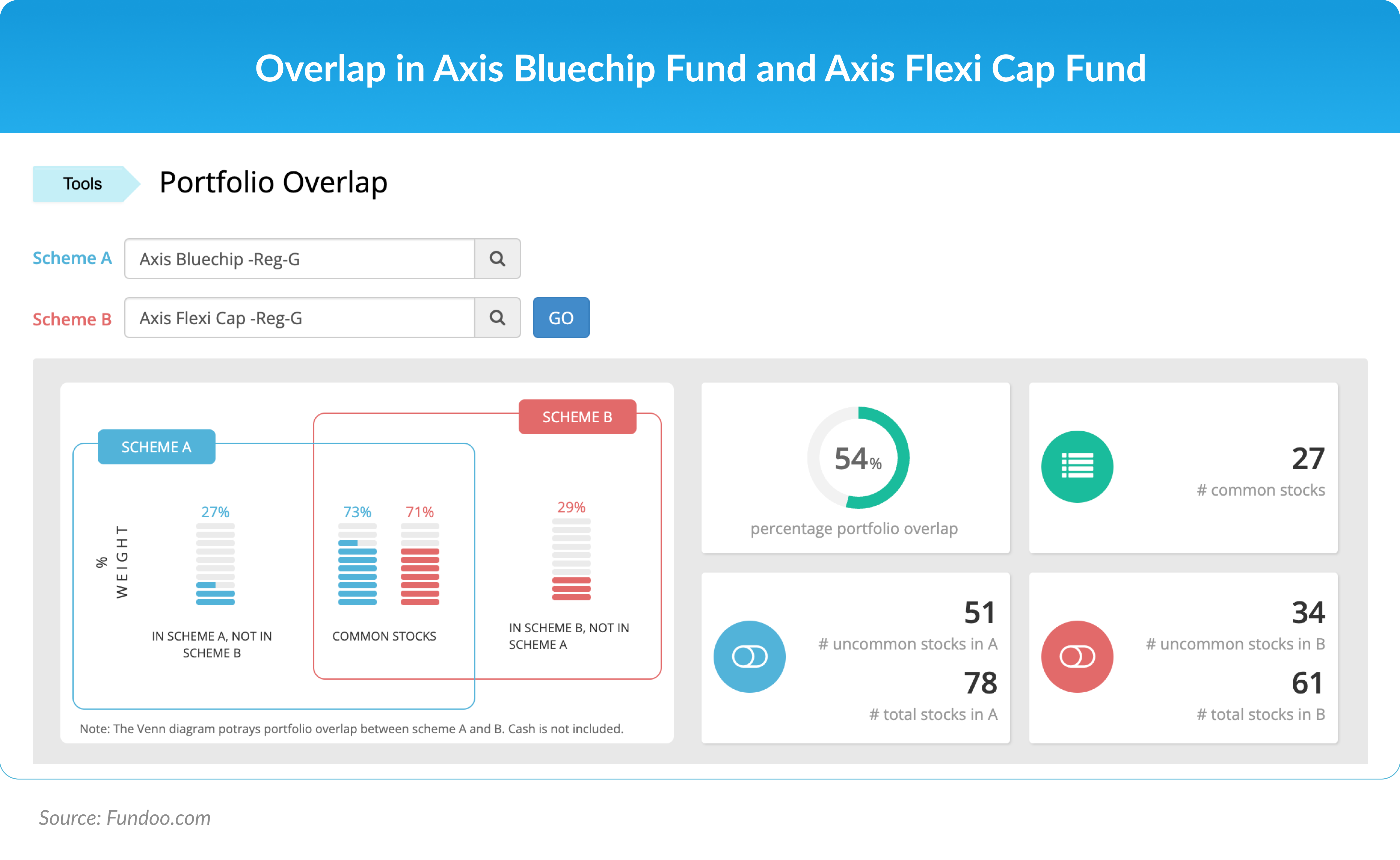6 min read • Published 10 Jan 25
Fund overlap trap: Is your portfolio truly diversified?


Table of Contents
How mutual fund overlap can increase your portfolio’s risk and how to mitigate it.
The Story
The Indian mutual fund industry showcased stellar growth in 2024, with net inflows surging by 135% YoY till Nov’24. Retail investors are progressively diversifying their portfolios across multiple funds.
However, a concealed risk exists among evidently diversified portfolios: fund overlap, a situation where two or more mutual funds hold the same stocks or securities in their portfolios, leading to reduced diversification for the investor.
Understanding and mitigating this risk is essential for sustained financial success. Let’s take a closer look at fund overlapping.
Understanding Fund Overlap
Imagine owning two diversified equities mutual funds in different categories. One concentrates on large-cap stocks, and the other is a flexi-cap fund.
Despite their noticeable differences, a detailed examination may uncover significant similarities in their holdings.
Both might occupy significant holdings in leading Indian corporations such as Reliance Industries, HDFC Bank, or Infosys. This overlap amplifies your risk in these particular firms.
If these firms underperform due to sector-specific issues or general economic downturns, both funds would certainly suffer, potentially increasing your underperformance or even losses.
For example, let us take the Axis Bluechip Fund and Axis Flexicap Fund.

As you can see, they have a portfolio overlap of 54%. They have 27 stocks in common.
Before we understand how to mitigate the overlapping in mutual funds, we have to understand what leads to it in the first place.
What leads to overlapping?
Specific sectors, such as financials (banks and non-banking financial companies/NBFCs) and information technology, predominate the Indian market.
For example, the financial sector makes up more than one-third of the total weight in the Nifty 50 index. Similarly, in the Nifty Midcap 150 index, it accounts for over one-fifth of the weight, and in the Nifty Smallcap 100 index; it carries one-fourth of the total weight in the index.
Now, if the RBI introduces stringent lending norms that affect the banking sector, a fund heavily invested in this sector might face losses. If several of your funds hold similar sectoral stocks, they may all underperform, magnifying the risk.
So even if you invest in three different funds for each market cap, thinking it will diversify your investment portfolio, you might end up with a significantly concentrated portfolio.
It creates three major problems:
1. Decreased diversification
2. Increased volatility
3. Overlooked possibilities
Well, here’s how you can mitigate the risk of overlapping.
How to mitigate overlap risk?
You can check fund overlapping before you invest in any other mutual fund with your existing fund by utilizing secondary platforms like thefundoo.com and advisorkhoj.com that provide tools for analyzing fund overlap.
Another thing that you can do is select funds with diverse investing strategies (value, growth, contrarian) or those concentrating on certain topics or sectors with little correlation.
To Conclude
Through the proactive approach, you as an investor, can construct more robust portfolios that are adept at withstanding market volatility and attaining your long-term financial objectives.
